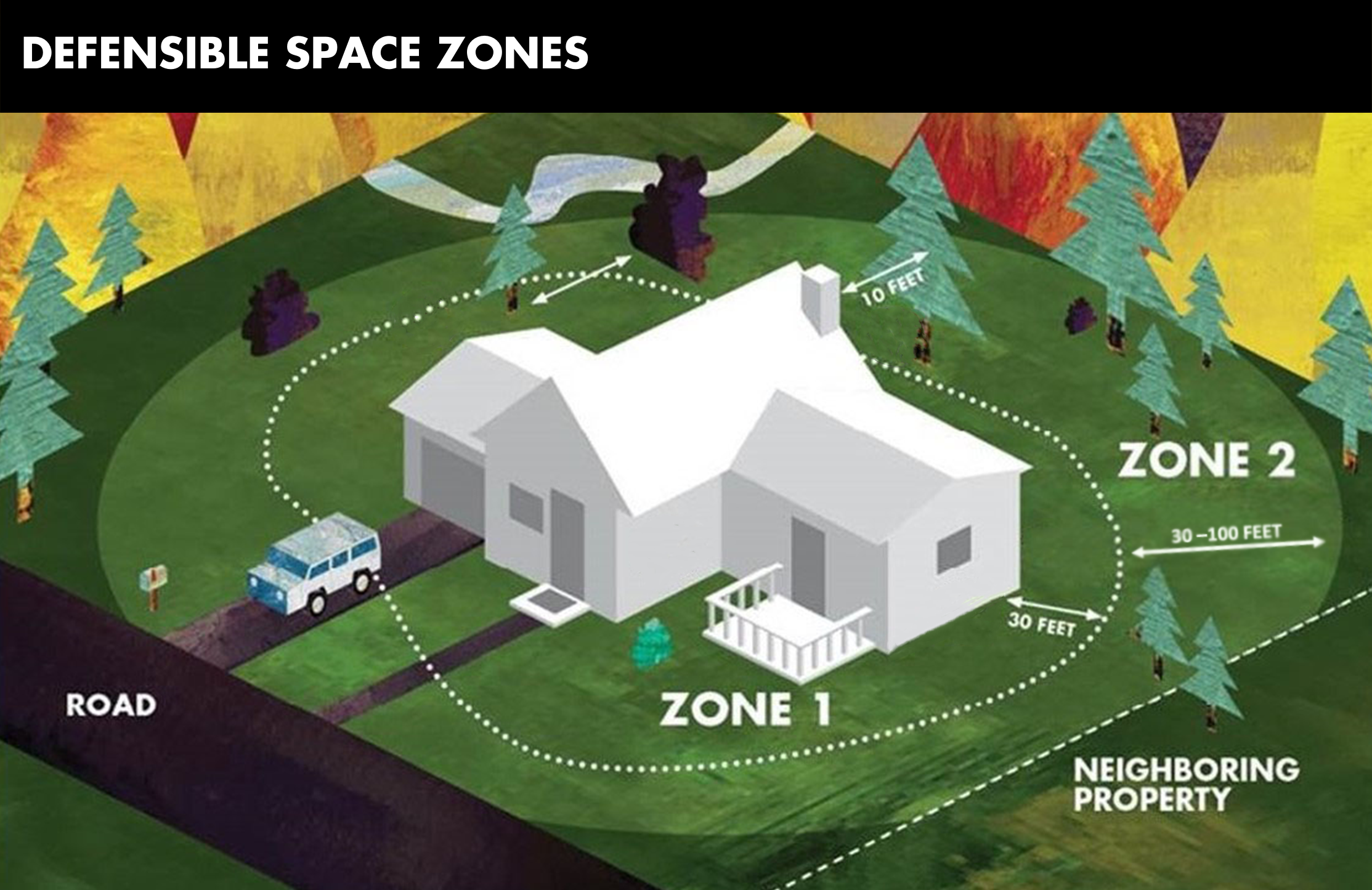In the last few years, our county has witnessed wildfires that have caused damage and loss of homes. The Cal fire website is a wonderful resource in ensuring that your home is protected the best it can be. Below is an excerpt from Cal Fire:
Roof: The roof is the most vulnerable part of your home. Homes with wood or shingle roofs are at high risk of being destroyed during a wildfire.
- Build your roof or re-roof with materials such as composition, metal, clay or tile. Block any spaces between roof decking and covering to prevent embers from catching.
- Remove accumulated vegetative debris from the roof.
Vents: Vents on homes create openings for flying embers.
- Cover all vent openings with 1/16-inch to 1/8-inch metal mesh. Do not use fiberglass or plastic mesh because they can melt and burn.
- Use Ember and flame resistant vents (WUI vents).
Eaves and Soffits: Eaves should be boxed in (soffited-eave design) and protected with ignition-resistant* or non-combustible materials.
Rain Gutters: Keep rain gutters clear or enclose rain gutters to prevent accumulation of plant debris.
- Install a corrosion-resistant and noncombustible metal drip edge for additional protection of the combustible components on your roof’s edge.
- Use a noncombustible gutter cover to prevent buildup of debris and vegetation in the gutter.

Zone 1 – Lean, Clean and Green Zone
Zone 1 extends 30 feet from buildings, structures, decks, etc. or to your property line, whichever is closer.
- Remove all dead plants, grass and weeds (vegetation).
- Remove dead or dry leaves and pine needles from your yard, roof and rain gutters.
- Remove branches that hang over your roof and keep dead branches 10 feet away from your chimney.
- Trim trees regularly to keep branches a minimum of 10 feet from other trees.
- Relocate wood piles to Zone 2.
- Remove or prune flammable plants and shrubs near windows.
- Remove vegetation and items that could catch fire from around and under decks, balconies and stairs.
- Create a separation between trees, shrubs and items that could catch fire, such as patio furniture, wood piles, swing sets, etc.
Zone 1 extends 30 feet from buildings, structures, decks, etc. or to your property line, whichever is closer.
- Remove all dead plants, grass and weeds (vegetation).
- Remove dead or dry leaves and pine needles from your yard, roof and rain gutters.
- Remove branches that hang over your roof and keep dead branches 10 feet away from your chimney.
- Trim trees regularly to keep branches a minimum of 10 feet from other trees.
- Relocate wood piles to Zone 2.
- Remove or prune flammable plants and shrubs near windows.
- Remove vegetation and items that could catch fire from around and under decks, balconies and stairs.
- Create a separation between trees, shrubs and items that could catch fire, such as patio furniture, wood piles, swing sets, etc.
Zone 2 – Reduce Fuel Zone
Zone 2 extends from 30 feet to 100 feet out from buildings, structures, decks, etc. or to your property line, whichever is closer.
- Cut or mow annual grass down to a maximum height of 4 inches.
- Create horizontal space between shrubs and trees.
- Create vertical space between grass, shrubs and trees.
- Remove fallen leaves, needles, twigs, bark, cones, and small branches. However, they may be permitted to a depth of 3 inches.
- All exposed wood piles must have a minimum of 10 feet of clearance, down to bare mineral soil, in all directions.
Zone 2 extends from 30 feet to 100 feet out from buildings, structures, decks, etc. or to your property line, whichever is closer.
- Cut or mow annual grass down to a maximum height of 4 inches.
- Create horizontal space between shrubs and trees.
- Create vertical space between grass, shrubs and trees.
- Remove fallen leaves, needles, twigs, bark, cones, and small branches. However, they may be permitted to a depth of 3 inches.
- All exposed wood piles must have a minimum of 10 feet of clearance, down to bare mineral soil, in all directions.
Here's some links that may be helpful:
Kind regards from the Moriarty Roofing Family.






